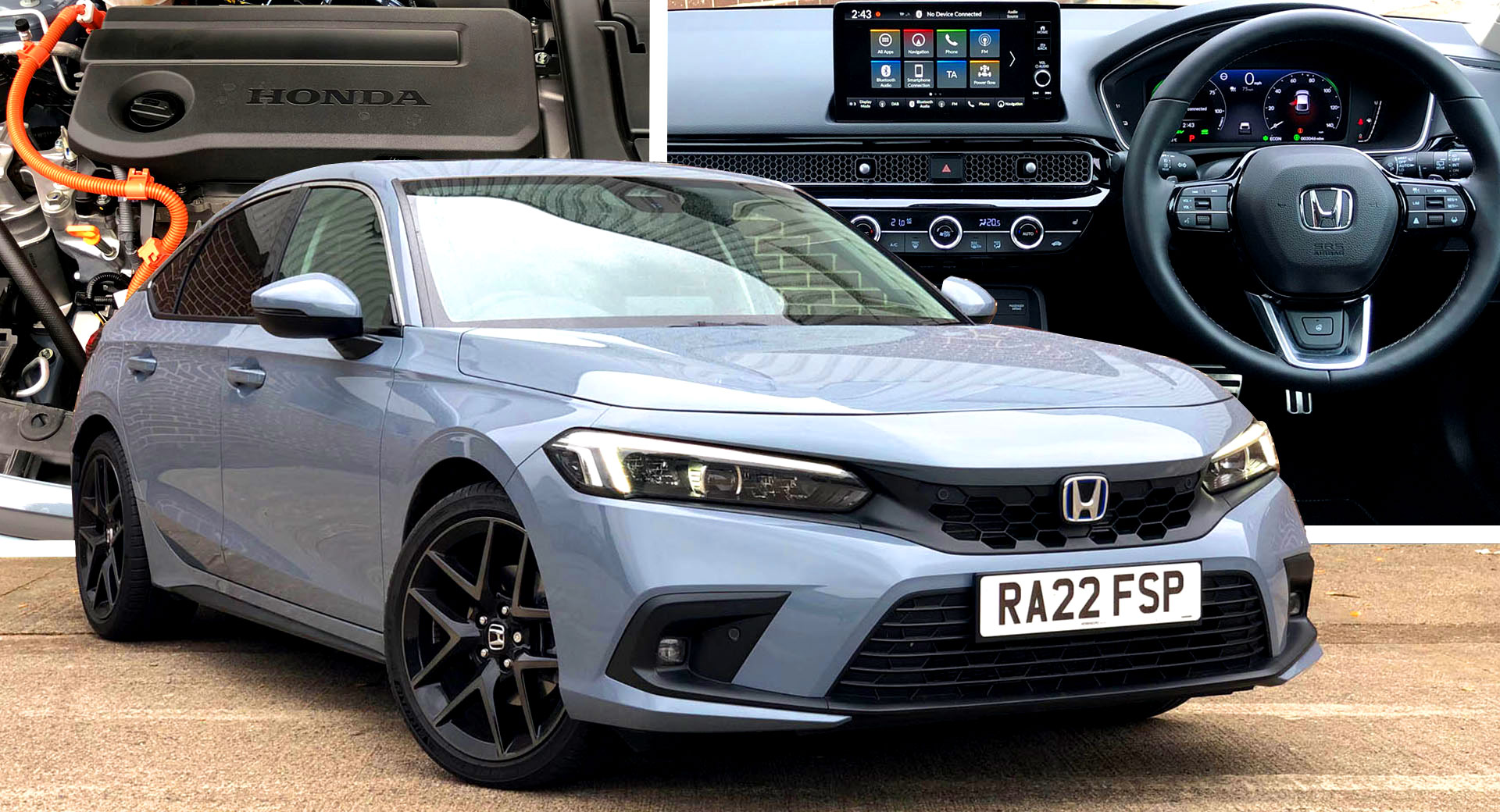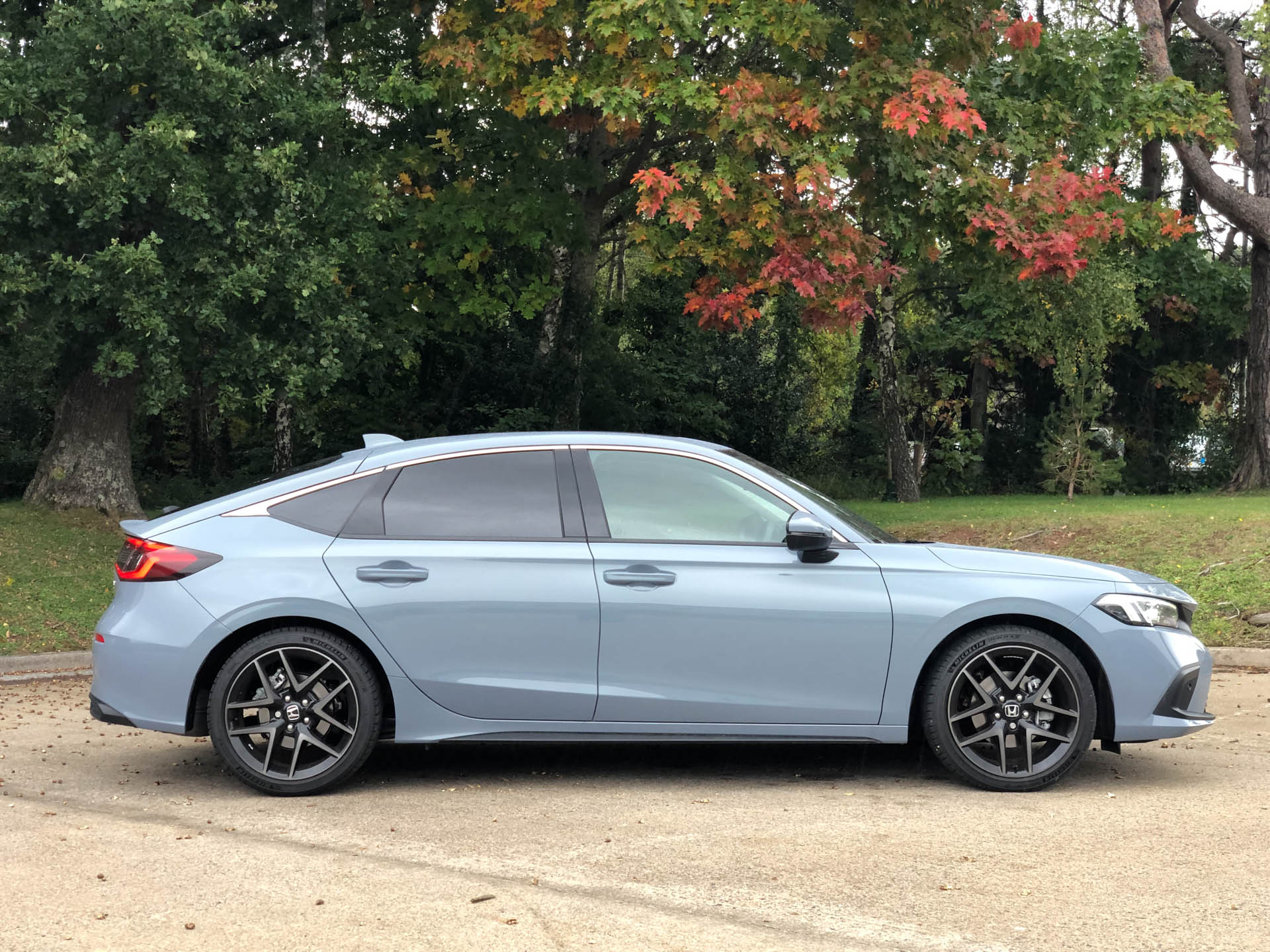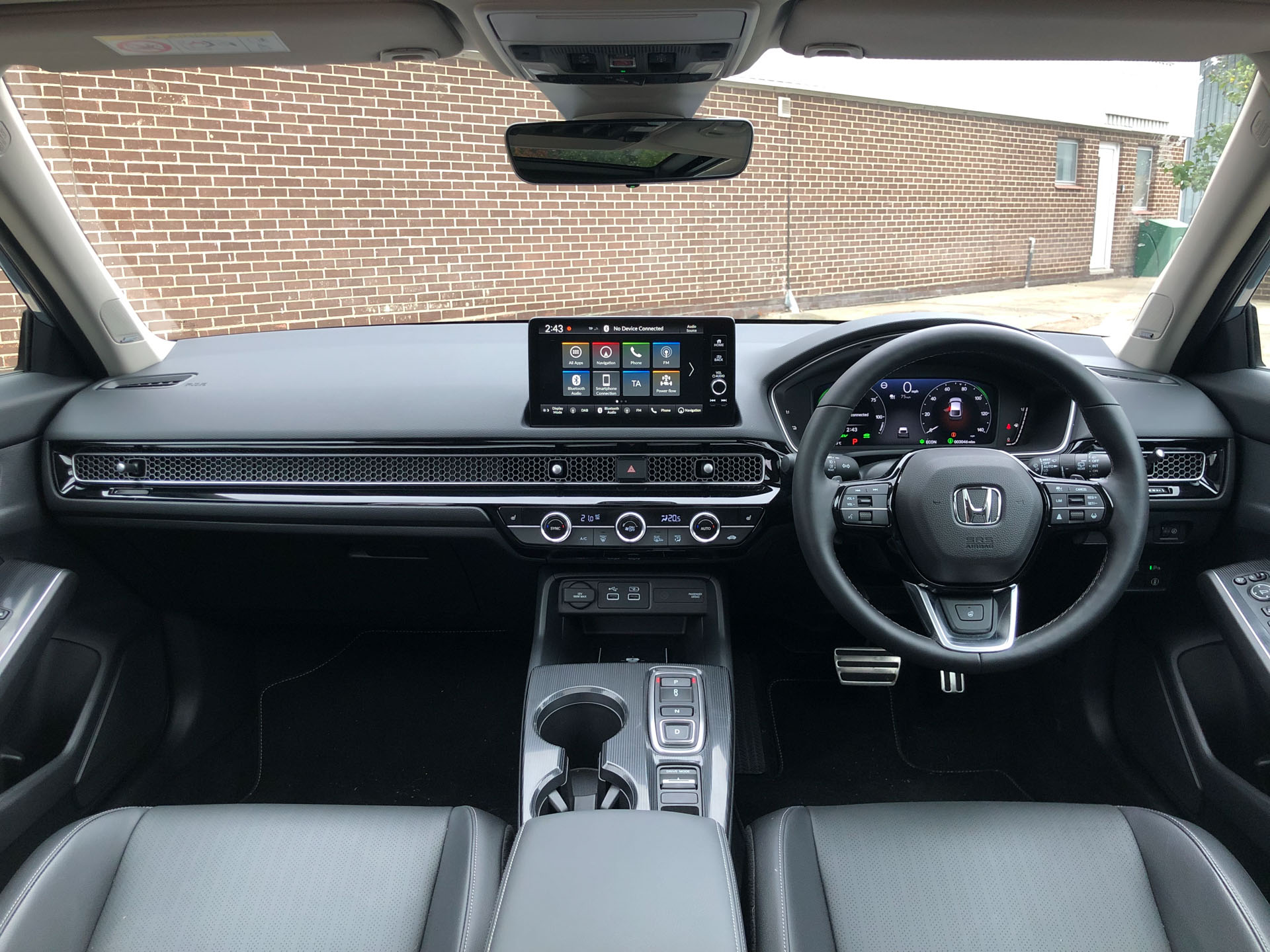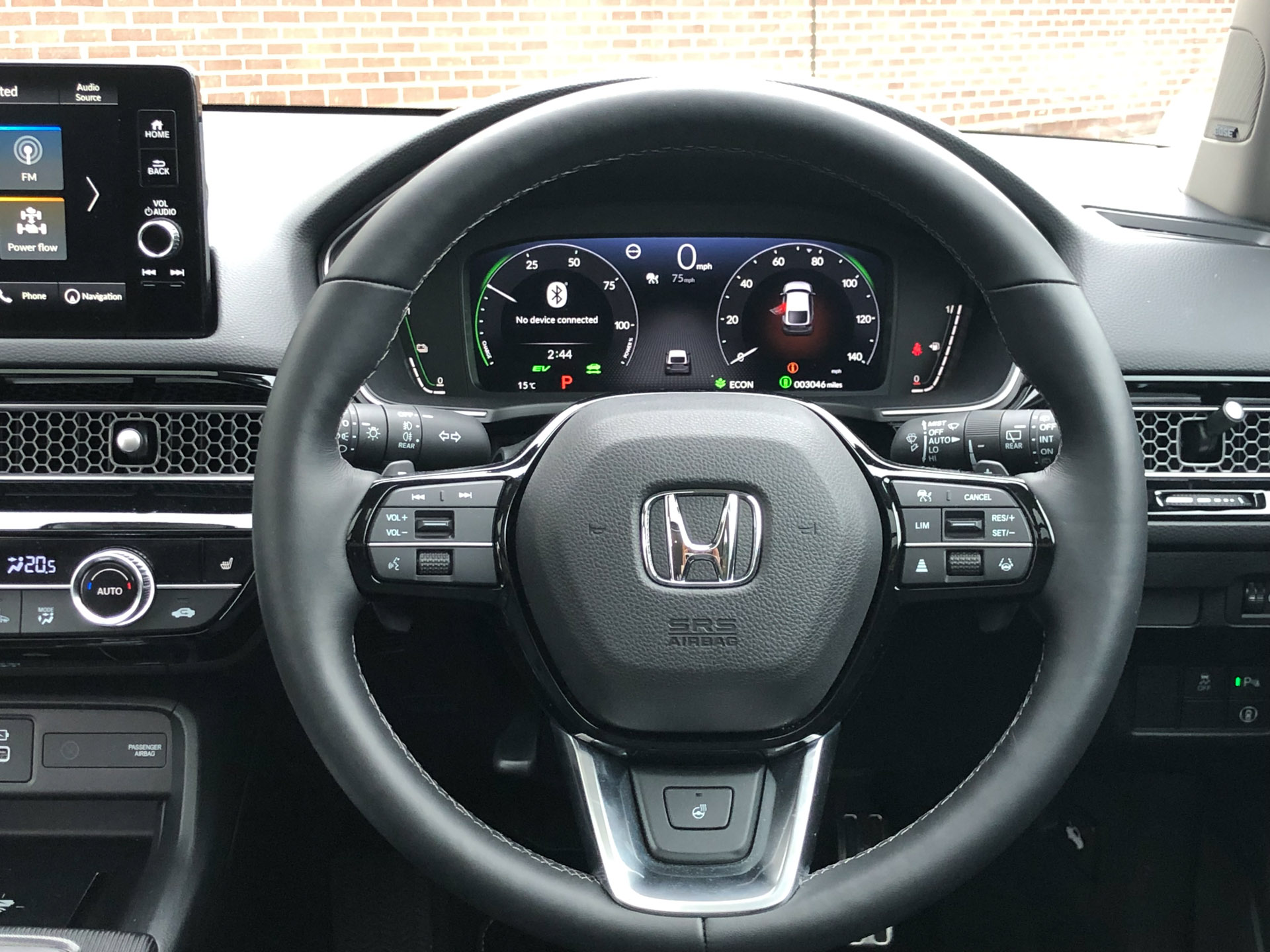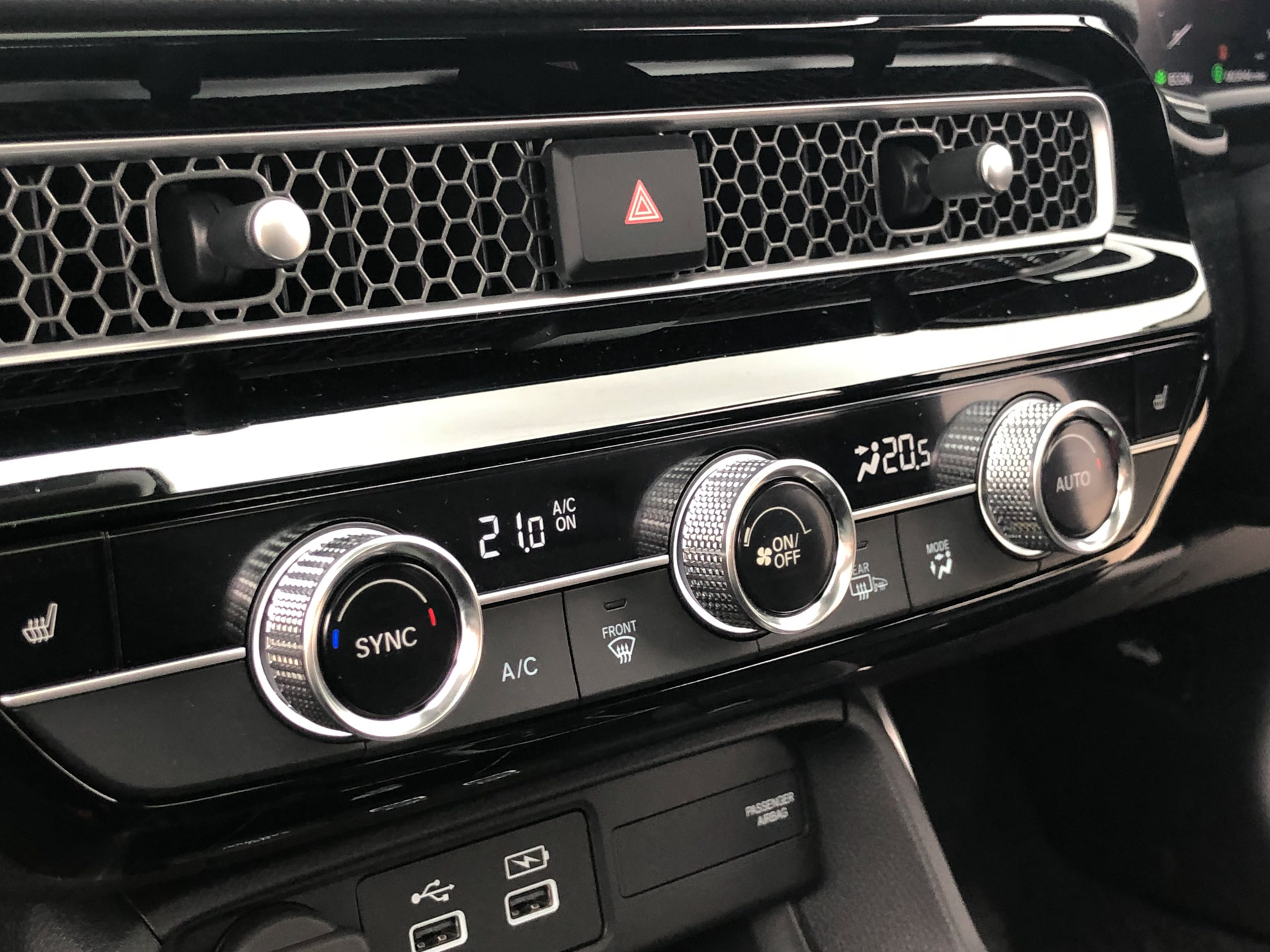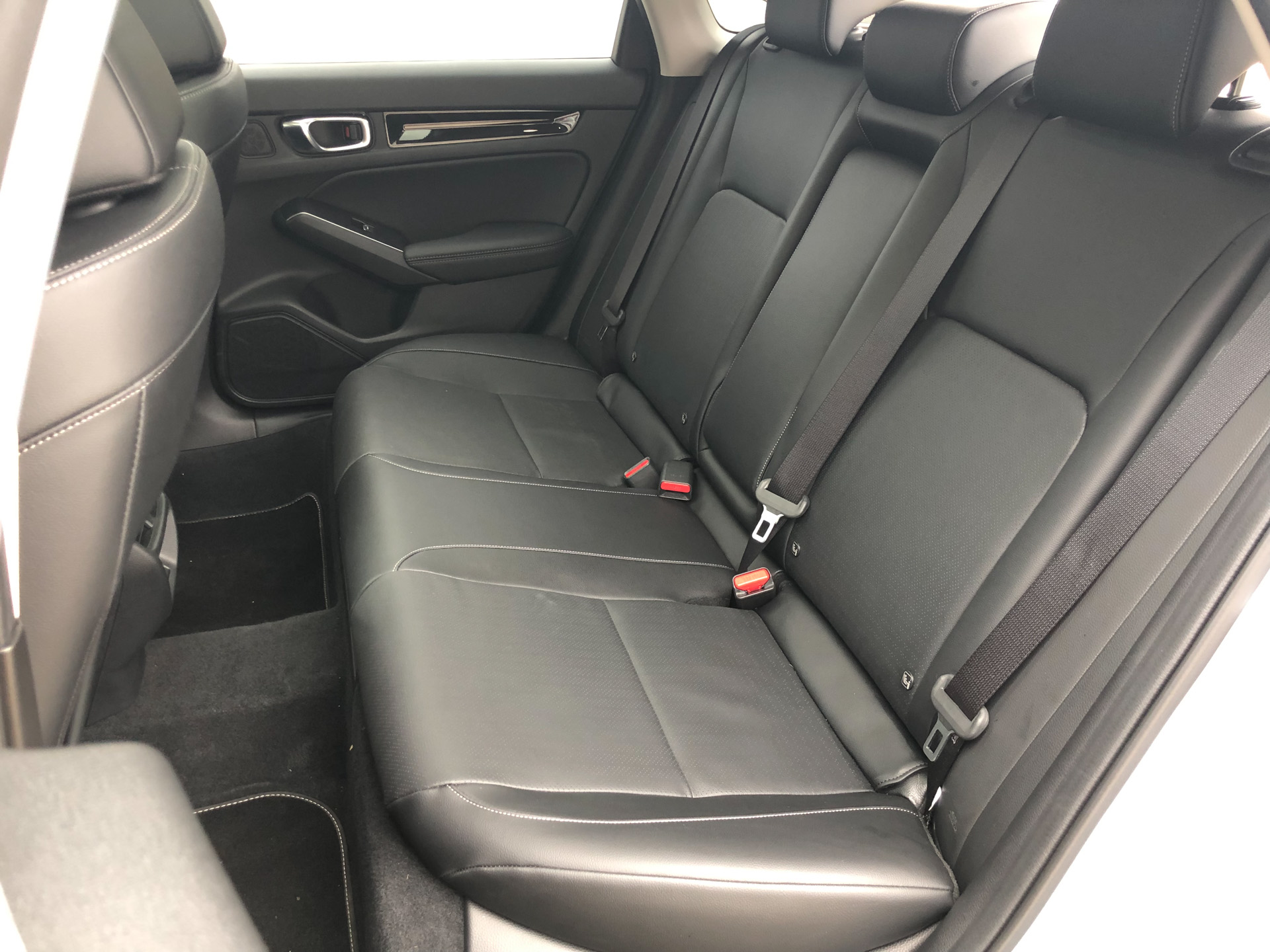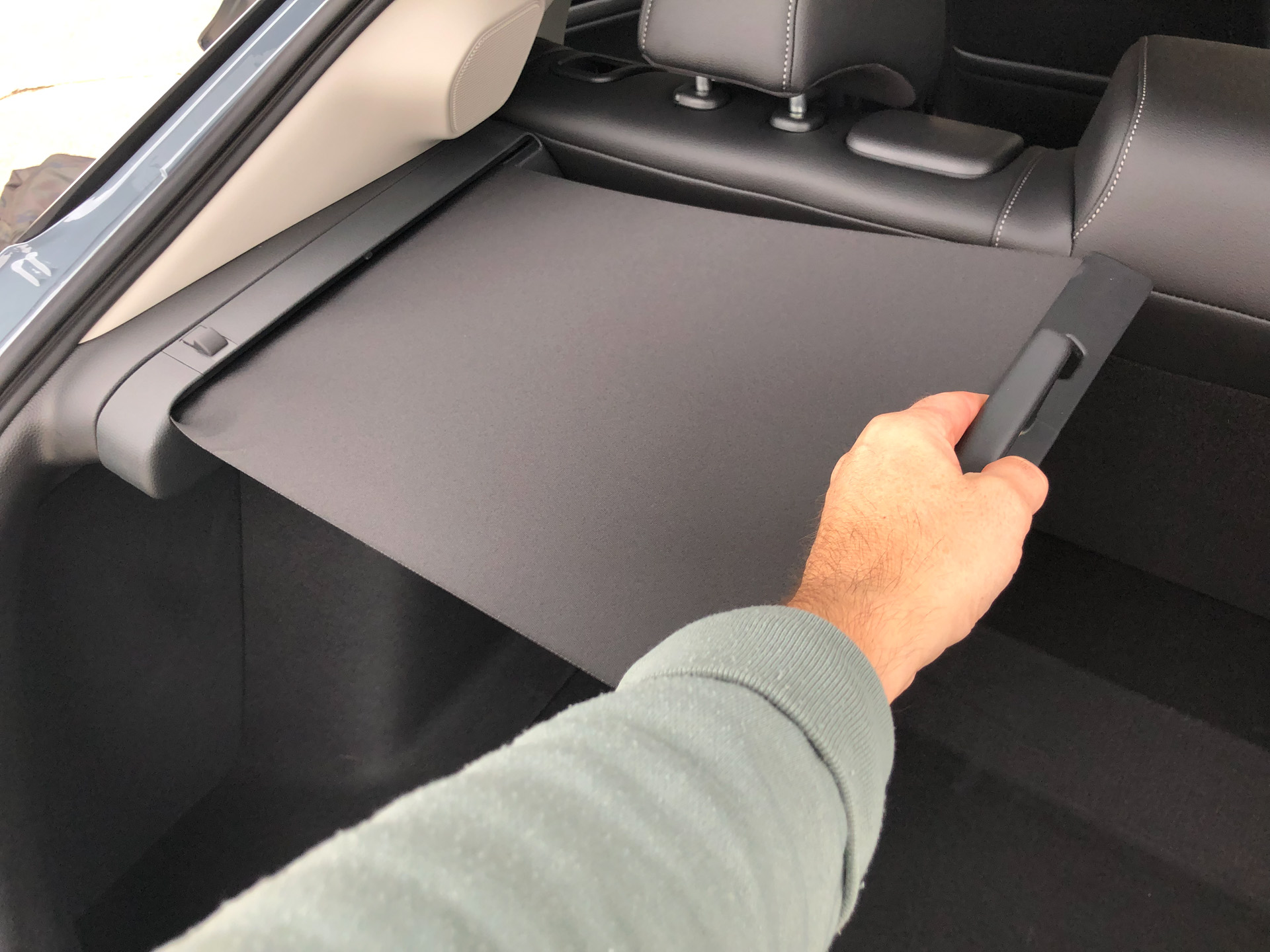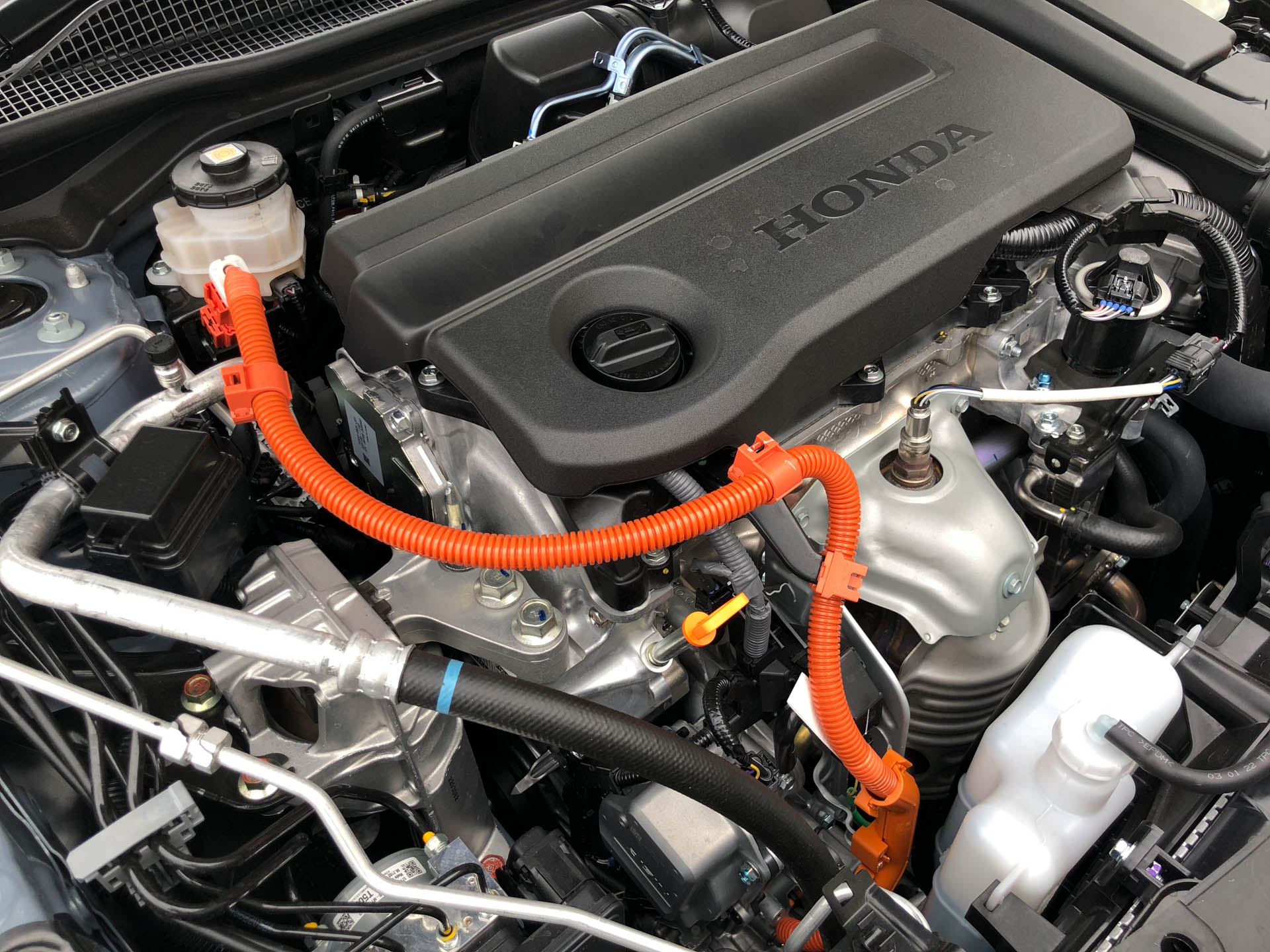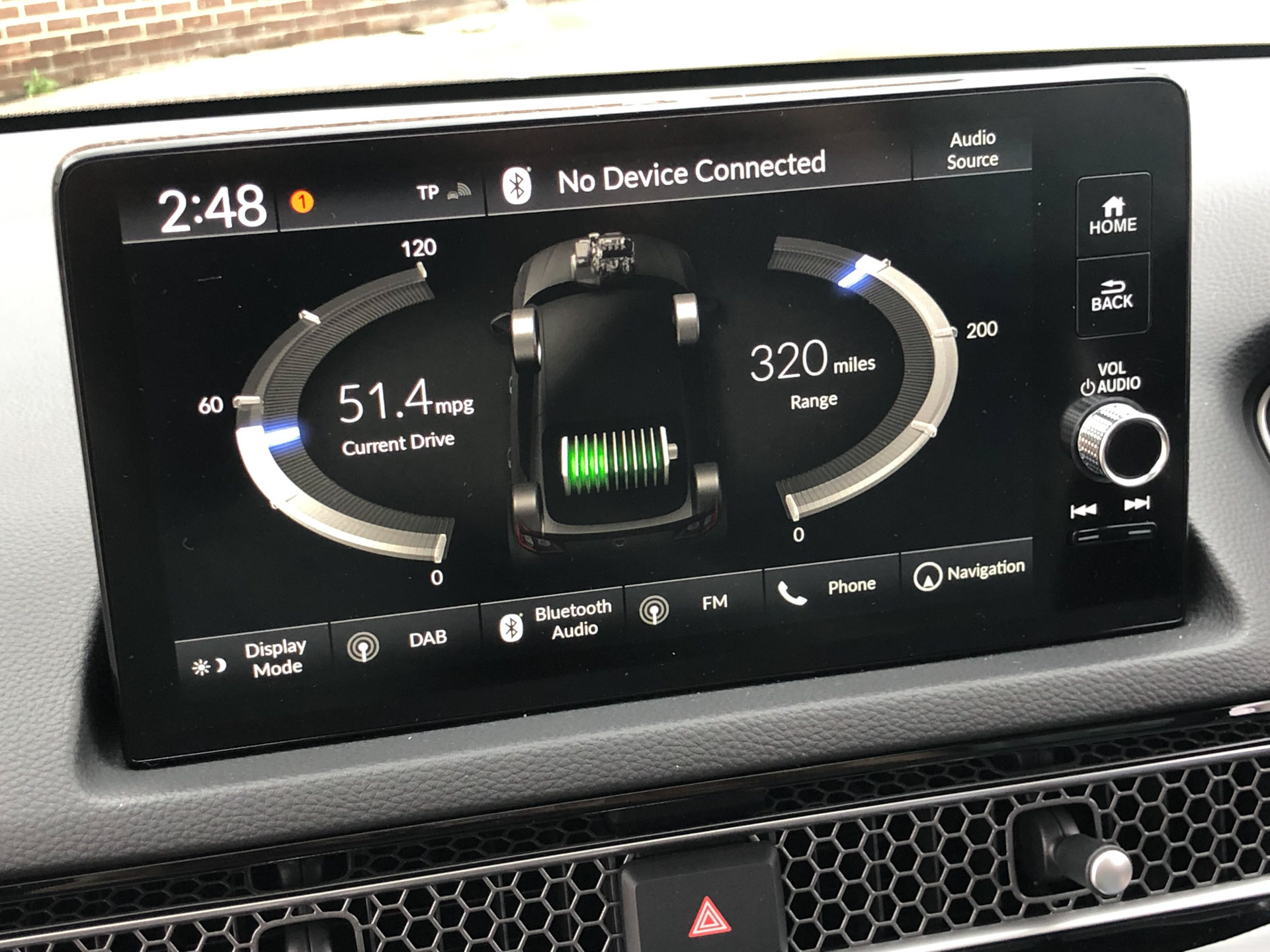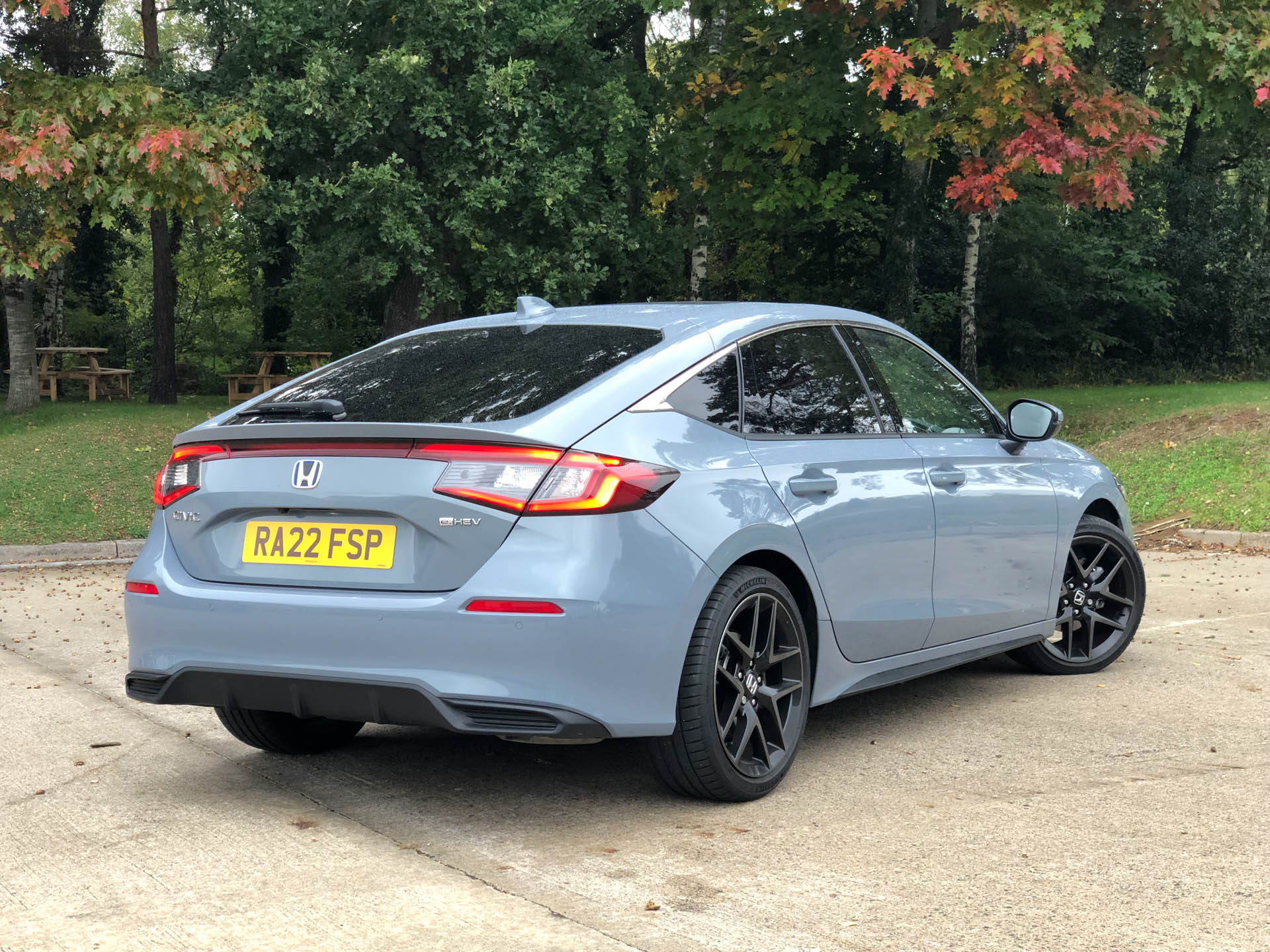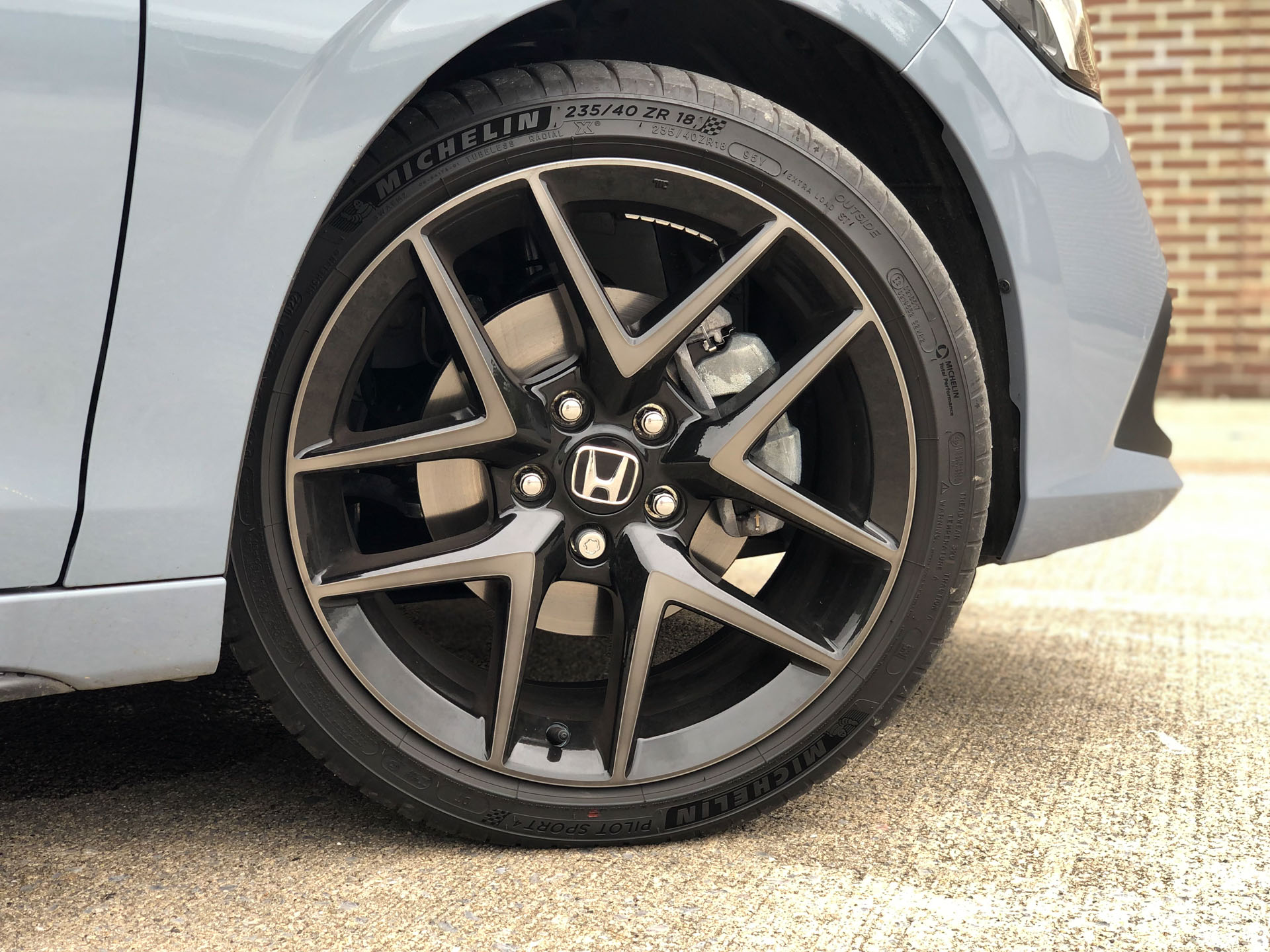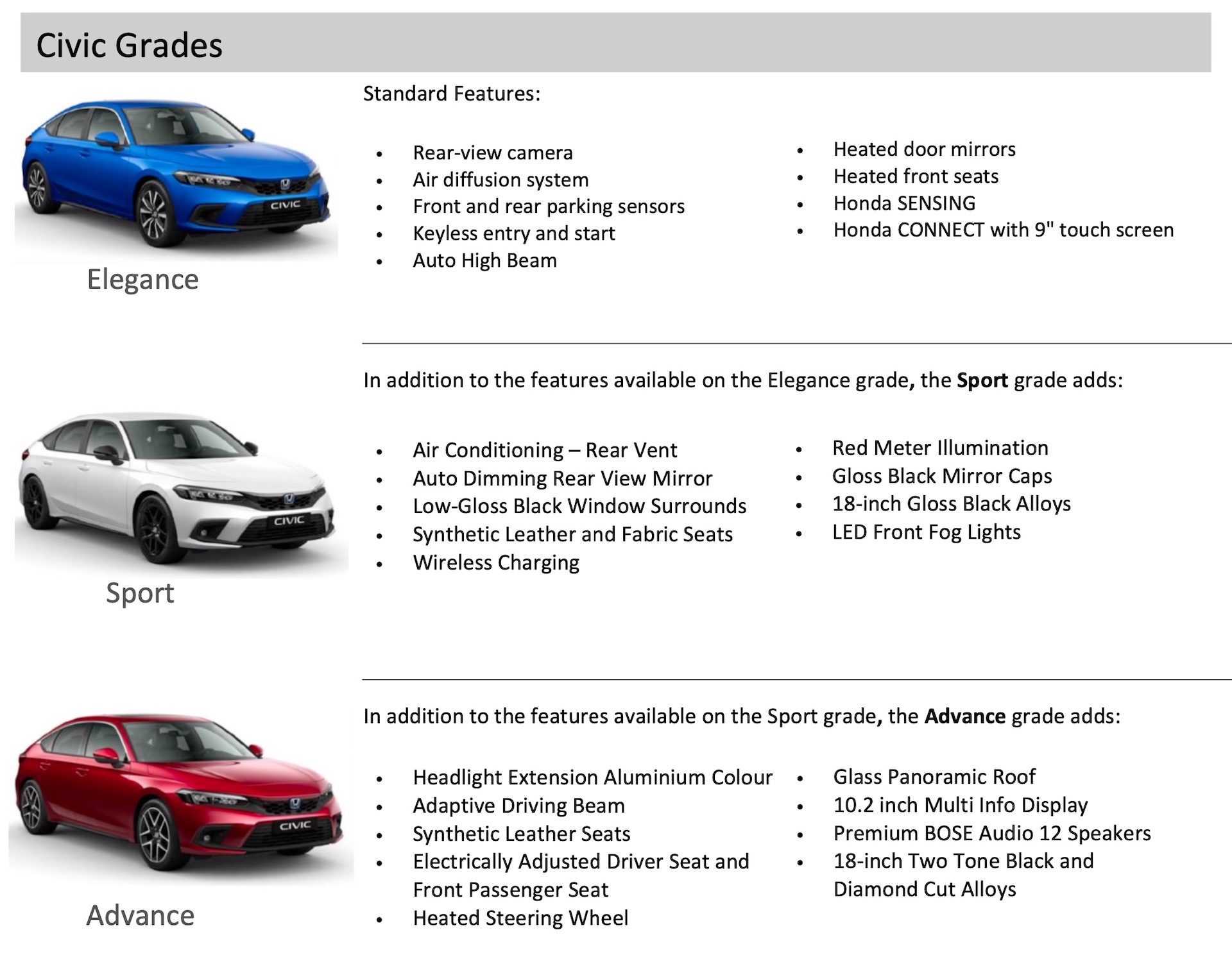If the 2023 Honda Civic has cropped up in your conversations lately, we’ll bet the subject was the new Type-R hot hatch that’s due to hit showrooms later this year, and whether you’d buy one over Toyota’s GR Corolla.
But out in the wider world there’s a far more important, relevant and affordable Civic that’s grabbing buyers’ attention. The Civic e:HEV isn’t the first hybrid Civic – Honda introduced its first electrified Civic 20 years ago – but there was no hybrid version in the previous, 10th-generation, Civic line.
Now the hybrid is back, but in a very different kind of drivetrain, and it’s no longer a niche addition to the range. In the UK, where I drove this one, the e:HEV hatchback is the only model available until the Type-R arrives. And even in North America, where 1.5 turbo, hotter 1.5 turbo Si and 2.0 atmo powertrains are all on the menu, the hybrid is going to be a big deal for Honda when it arrives next year, particularly now that the Insight hybrid is dead.
But is this another boring hybrid that only mpg-freaks will enjoy driving? And how does its weird range-extender drivetrain feel? We jumped behind the wheel to find out.
Related: 2022 Honda Civic e:HEV Hatch Debuts In Europe With 181-HP Hybrid Powertrain
Quick Facts › › ›
› Model: 2022 Honda Civic e:HEV
› MSRP: from £29,595 (not yet available in North America)
› 0-62 MPH: 7.8-8.1 Seconds
› Powertrain: 2.0L Four-Cylinder / Hybrid / FWD
› Output: 181 HP (184 PS/135 kW) & 232 lb-ft (315 Nm)
› Economy: 57-60 MPG Combined WLTP (Imperial gallon; 48-50 MPG U.S)
› On Sale: Now in ROW, 2023 for North America
The first thing that strikes you about the 11th-generation Civic, which has nothing to do with its hybrid setup, is how low it looks. And that’s not just because we’re all used to small family cars looking like crossovers these days. It really is low, measuring just 55.5-in (1.41 m) from roof skin to road, and along with the fastback rear that gives it a really sporty vibe that’s carried over when you drop into the nice low-set seat. It’s also a relief to see that Honda has junked the awful fake vents (and to my eyes, generally awful styling) of the old car for something much classier, but those exterior changes pale compared with the interior transformation.
Who’s been copying Audi’s homework?
The old car’s dashboard design and material mix was so bad it made a Dacia look premium. But the new has clearly been benchmarked against cars from Audi and BMW, both in terms of look and feel. The fact that the digital instrument screen doesn’t completely fill the binnacle even on the top-spec cars cheapens the effect slightly, but those directional air vent toggles have a nice firm action. And though the 9-in touchscreen is responsive and much nicer to use than the old car’s, I’m a big fan of Honda’s decision to fit it with a volume knob, along with conventional rotary heater controls (just like an Audi A4’s). This really is a great interior, and usefully roomy, too.
But the coolest interior feature is one that might not seem very cool at all. It’s the brilliant retractable load cover that you pull across the car from the left C-pillar to the right, rather than pull towards you, meaning there’s no big bar to remove (and then store, or accidentally leave in a parking lot) when you need to drop the seats and expand the luggage space. The cargo bay is already bigger than on rivals like the Golf and Toyota Corolla, though both of those cars offer more rear headroom and easier access to the rear seats because you don’t have to duck as low when climbing in.
Quirky hybrid powertrain
But that’s enough scene-setting, let’s get to the e:HEV tech because it’s going to be vitally important one for Honda. A similar, but smaller, setup is already offered in the Jazz and HR-V in the UK, whose CR-V shares the Civic’s powertrain, while a more powerful version is headed for North America in the CR-V and Accord.
The core ingredients, a four-cylinder petrol engine and electric booster, both driving the front wheels, sound entirely conventional, but the difference is in the detail. The combustion motor isn’t a small turbo one but a relatively large 2.0-liter, naturally aspirated, Atkinson-cycle engine making 141 hp (143 PS) and 137 lb-ft (186 Nm). Honda says it’s mostly only there to charge the miniscule 1 kWh battery that supplies energy to the two electric motors that together make 181 hp (184 PS / 135 kW), though the engine can drive the wheels directly when cruising. Don’t bother looking for a charging flap: there isn’t one. Honda thinks this hybrid format provides more benefits than a PHEV drivers might not remember to hook up to the mains.
Fake gearchanges will fool most people
If you’re expecting to be able to drive the Civic around like an EV with the engine only chiming in when the battery is about drained, you’ll be disappointed. In practice, while the ICE motor is happy to take a back seat and let you mooch about on electric power in traffic, it regularly chimes in, both to charge the battery even when it’s half full, and, according to the energy display on the touchscreen during our test, to drive the wheels.
Related: 2023 Honda Accord Debuts With New Looks And Techy Interior, But Drops 2.0 Turbo
When it kicks in as a generator, it’s clearly audible, because it seems to be ticking over at much more than the 800 rpm conventional gas cars idle at. Which can sound odd, because the fixed buzz doesn’t tally with your speed. But at other times the e:HEV does its best to convince you that you’re driving a conventional gas-powered automatic, winding through its rev range and then back down thanks to some fake gear changes.
It makes the e:HEV much more fun to drive fast than a hybrid fitted with a CVT (Honda calls this “eCVT” but it isn’t really), but it doesn’t quite pull off the charade. Climb hard on the throttle and the pacing of the first gear change or two seems believable. But then then next two are clicked through so fast it would make an F1 car’s gear ratios look gappy, slightly spoiling the illusion.
No Type-R, but definitely not boring
Overall though, it’s a good effort and means the e:HEV is far more fun than I was expecting. It’s also reasonably quick, the hybrid system’s total powertrain output of 181 hp (184 PS) and 232 lb-ft (315 Nm) pulling it to 62 mph in 7.8 seconds in its lighter configuration, and though that’s a good 2 seconds off what the Type-R should be capable of, this is a hybrid that’s enjoyable to hustle along.
That’s not only down to the powertrain, but the tight body control, strong front-end grip, meaty, quick-ratio steering and almost 1980s-like slim A-pillars that give a brilliant widescreen view on twisty roads. We haven’t driven the new Type-R yet, but the fact that even this non-sporting hybrid is so entertaining has us chomping at the bit to get behind the wheel of the hot one.
On the downside, the Civic isn’t the quietest cruiser, which I’m pretty sure has been a constant complaint in just about every Honda review I’ve written in the past 20-odd years. And the trade-off for that impressive B-road ability is a level of ride comfort, at least on our car’s 18-in wheels, that I was okay with, but more comfort-minded buyers might not be.
Strong economy, but not PHEV-grade frugal
And what about economy, an increasingly important factor since the actual economy has decided to flush itself down the toilet and gas prices are still high? I averaged between 45-51 mpg Imperial (38-42 U.S.) in mixed driving conditions that included some quick country road sections and motorway work as well as some urban crawling, which isn’t bad. A PHEV would improve on those numbers if most of your driving involved short journeys, but it would cost you more to buy and add weight, potentially spoiling the handling.
UK-spec Civics are available in three grades: Elegance, Sport and Advance, the base car coming in at £29,595 and our Advance costing £32,995, but also costing 0.3 seconds in the 0-62 mph sprint because of the added weight that comes from kit like electric seats, a panoramic roof and Bose hifi. For that reason I’d be tempted to stick with the base car, which loses the fancy digital gauge pack but has most other bases covered, including adaptive cruise, parking sensors, keyless entry, heated seats and Apple CarPlay.
Verdict: Honda’s transformation of the Civic from passé to almost premium is impressive, and so is the e:HEV’s unusual hybrid drivetrain. If you want a good looking, well equipped hatch that’s fun to drive and doesn’t guzzle fuel, check this one out first.
